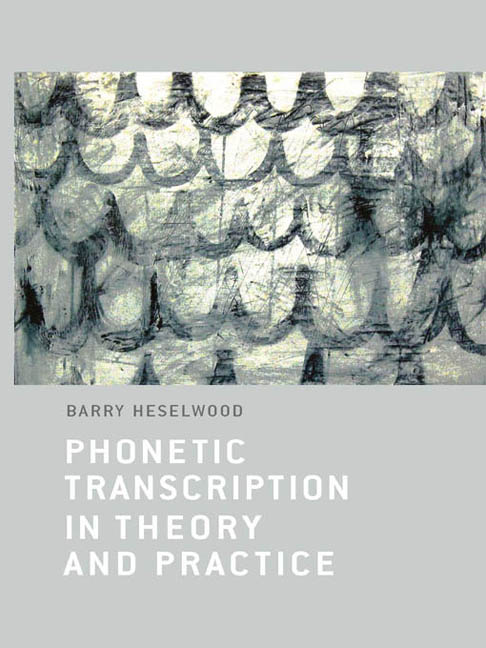Book contents
- Frontmatter
- Contents
- List of Tables
- List of Figures
- Preface
- Acknowledgements
- Introduction
- 1 Theoretical Preliminaries to Phonetic Notation and Transcription
- 2 Origins and Development of Phonetic Transcription
- 3 Phonetic Notation
- 4 Types of Transcription
- 5 Narrow Impressionistic Phonetic Transcription
- 6 Phonetic Transcription in Relation to Instrumental and Other Records
- 7 Uses of Phonetic Transcription
- Glossary
- References
- Appendix: Phonetic Notation Charts
- Index
3 - Phonetic Notation
Published online by Cambridge University Press: 07 December 2017
- Frontmatter
- Contents
- List of Tables
- List of Figures
- Preface
- Acknowledgements
- Introduction
- 1 Theoretical Preliminaries to Phonetic Notation and Transcription
- 2 Origins and Development of Phonetic Transcription
- 3 Phonetic Notation
- 4 Types of Transcription
- 5 Narrow Impressionistic Phonetic Transcription
- 6 Phonetic Transcription in Relation to Instrumental and Other Records
- 7 Uses of Phonetic Transcription
- Glossary
- References
- Appendix: Phonetic Notation Charts
- Index
Summary
Introduction
The purpose of a system of phonetic notation is to function as a resource for denoting theoretical models which become descriptive models when used in transcriptions (see Chapter 1 Section 1.3.1, Chapter 4 Section 4.0).
There are two sides to phonetic notation, namely the design of the glyph and its denotation. The history of written language and phonetic notation is full of the same glyph being used with different values. Just to take a random example, the ‘bullseye’ glyph ‘ʘ’ seems to have started life as a variant of the Greek letter theta <θ> in the Umbrian alphabet, for which it was also used in Tocharian; it was drafted several centuries later into the Gothic alphabet invented by the Greek Bishop Ulfilas (aka Wulfila) in the fourth century CE for IPA [w] (Coulmas 1996: 168), appears with the phonetic value [nd] in the Turkish Yenisei runes (ibid.: 515), corresponds to [s] in the Berber Tifinagh alphabet (ibid.: 504), was used in late eighteenth-century America by William Thornton for IPA [ʍ] (Abercrombie 1981: 210, 216), turns up in the Vai syllabary in 1820s Liberia for [ku] (Coulmas 1996: 538), and then in 1976 became the IPA symbol for the bilabial click (Pullum and Ladusaw 1996: 132). Fascinating as the history of individual glyphs is, the focus in this chapter will be on the principles behind notation systems and how they function as a whole to denote phonetic categories.
Phonetic notations come in different types. They can be constructed according to different principles and be used in transcriptions to express analyses at different levels of phonetic, phonological and morpho-phonological structure. This chapter is concerned with describing principles of notation construction and how they relate to phonetic theory; Chapter 4 will consider the different types of transcriptions which can be made by employing notation systems.
Any phonetician engaged in transcription is likely to be in sympathy with Sweet (1877: 100) when he asserts that ‘[t]he notation of sounds is scarcely less important than their analysis’.
- Type
- Chapter
- Information
- Phonetic Transcription in Theory and Practice , pp. 73 - 140Publisher: Edinburgh University PressPrint publication year: 2013



